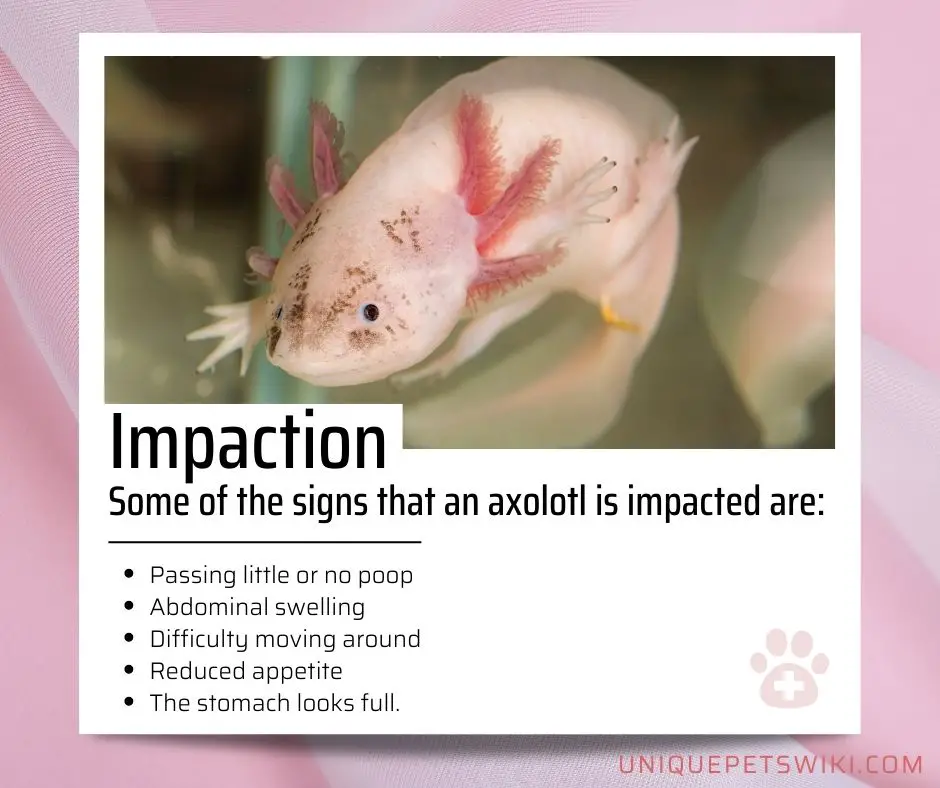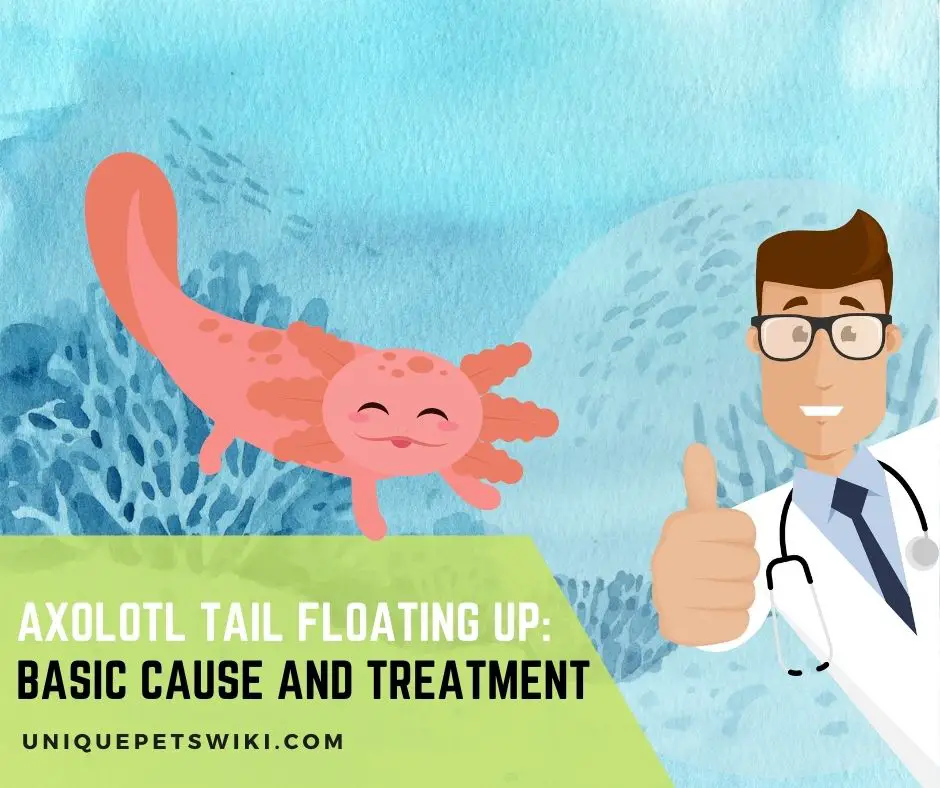Axolotls, also called Mexican walking fish, are a type of salamander species that spends their lifetime in the water.
Generally, axolotls are bottom dwellers as they walk along the tank bottom. You may be surprised to find your axolotls floating tail up as a beginner hobbyist.
Although many owners believe floating is normal in the axolotl, floating can also indicate that your axolotl is suffering from a health issue.
Axolotls can float tail up to indicate their preparation to lay eggs or when they are impacted, constipated, or overfed.
In this article, we will help break down everything you need to know when axolotl floats tail up from its causes to the treatment.
Contents
Why Are Your Axolotl Tail Floating Up?
Generally, axolotl floating tail up is not normal behavior, and they don’t do it on purpose. Axolotls usually float tail up to indicate they are suffering from a health condition.
The most common reason axolotl float tail up is that they have gas or are bloated. However, axolotls can also float tail up to indicate their preparation to lay eggs.
Impaction

One of the common reasons axolotl floats tail up is impaction and indigestion. Bloating and indigestion make it hard for the axolotl to poop, causing them to float and not be responsive. Some of the signs that an axolotl is impacted are:
- Passing little or no poop
- Abdominal swelling
- Difficulty moving around
- Reduced appetite
- The stomach looks full.
Axolotls are voracious eaters and can ingest anything that moves around them. However, they can become impacted if they ingest something they cannot digest or easily pass out, causing a blockage.
This blockage can occur if your axolotl ingests chitin, pieces of fake plants, rocks, tank décor, or anything bigger than their head.
You should try to treat impaction in axolotl once you notice it as it can be fatal to your axolotl. You can treat this by fridging your axie or through surgery. You should also suspend feeding during this period.
However, you can prevent your axolotl from impaction by avoiding using gravel substrate. You should also ensure that you use a minimal substrate or accessories larger than your axolotl head.
Your Axolotl Is About To Lay Eggs
Another reason for the axolotl to float tail up is when it is about to lay eggs. You can first determine if this is the case if you house a male and female axolotl together and it is the female floating tail up.
You can confirm if this is the case if the female axolotl occasionally turns her tail upward and swims continuously.
A pregnant female axolotl usually has a round, bloated belly that is bigger than their head. Axolotls only lay fertilized eggs and can lay up to 1000-1500 eggs at a time.
The period of pregnancy and egg laying is quite short. Axolotls will lay eggs around 12-72 hours after breeding with a male.
Female axolotls can lay their eggs all over the aquarium-like on the plants to the other aquarium décor in their habitat. Axolotls are also known to lay eggs on flat surfaces if there are no plants available in their aquarium.
A healthy axolotl egg is very small with dark brown color. However, the albino axolotl can lay white eggs without any pigmentation.
So, if you notice floating axolotl tails and any eggs like that. They are laying eggs. It is recommended that you separate the parent axolotl from their eggs after they finish laying the egg. This is because female axolotls can eat their eggs.
Axolotl eggs are quite tough, and you can easily transfer them with your clean bare hands. However, the best option is to remove the parents from the breeding tank to help ensure the eggs are in good shape.
Fox Run Heat-Resistant Glass Baster, One Size
- DON'T GET BURNED: Heat-resistant glass tube with a silicone bulb, so it's easy and intuitive to use without any of the risk.
- MORE JUICE, MORE FLAVOR: Use to baste your oven-roasted meats to keep them moist, juicy and flavorful.
- SLEEK AND FUNCTIONAL DESIGN: Clear so you can see contents inside. The glass tube also means it won't melt, unlike other plastic basters.
- EASY TO CLEAN: This baster is dishwasher safe, though handwashing is recommended so that it may serve you well for many years to come!
- MEASUREMENTS: This baster weighs 3.2 ounces and has dimensions 2 x 2 x 12 inches.
Last update on 2022-12-30 / Affiliate links / Images from Amazon Product Advertising API
What Should You Do If Axolotl Tail Floating Up
From the sections above, we can see that axolotl floating tail up can be caused by several reasons. Therefore, you will first need to determine whether your axolotl is impacted or about to lay eggs before you can treat this situation.
You can check the water quality of the aquarium and do not disturb it if you find some eggs. However, you will need to stop feeding your axolotls for a few days or fridge them if they are impacted.
FAQs
What does it mean when an axolotl curls its tail?
Axolotls curl their tails when they are stressed or unhappy. The water parameters are not at an ideal level if your axolotl’s gills appear curved towards the front of its face.
The best thing to do is to check the water parameters and change them when necessary. However, you may need to consult with a vet if the situation continues after correcting the water quality.
How will I know an axolotl is impacted?
You can determine whether your axolotl is impacted if they are floating tail up and looks bloated. Some of the other signs that you can also notice are:
Passing little or no poop
Abdominal swelling
Difficulty moving around
Reduced appetite
The stomach looks full.
How do you know if an axolotl is stressed?
There are several signs that indicate when an axolotl is stressed. Some of them are:
Curled or deterioration of your axolotl’s gills
Curled tail tip
Loss of appetite
Frequent floating
Gulping for air frequently
Frantic swimming in their tank
Lethargy
Loss of color in the gills or body.
Final Words
Sometimes, floating is not something that you should worry about. However, it should be a rare occurrence, and if your axolotls are frequently floating, it may be a sign of an underlying health problem.
Once you notice this, it is best to determine the cause of floating or contact a vet for diagnosis and treatment.

